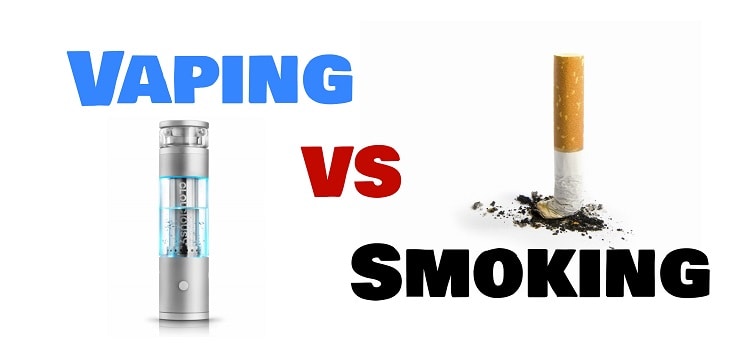Over the past several years, vaping has grown in popularity. These days, you’d be hard-pressed to go anywhere without seeing someone with a pen or vaping device sending up clouds of billowing white vapor in a variety of scents. Many people have switched to vaping from smoking for health reasons, but are the claims that vaping is better too good to be true?
A Look at the Main E-Liquid Ingredients
To determine whether vaping really is all it’s claimed to be, let’s first look at the chemicals that go into e-liquid, or e-juice, as some people call it. E-liquid is widely available in brick-and-mortar vape shops, as well as online stores and clubs that sell a selection of vaping accessories and equipment.
One of the biggest benefits of vaping e-liquid over smoking tobacco-based products is that people who vape don’t inhale the tar and assortment of vile chemicals contained in cigarettes. E-liquid is made up of vegetable glycerine (also known as VG) and propylene glycol (or PG).
What is the VG and what does it do? Vegetable glycerine, as you may have guessed by its name, is plant-based. It’s the ingredient that makes those beautiful clouds of vapor.
PG is the most controversial ingredient in e-liquid, but once you look past the fear-mongering and clickbait headlines, you’ll find that it’s nothing scary at all. PG has been referred to as “antifreeze” – which it is – but it’s not the kind you put in your car. Instead, it’s a food-safe grade of antifreeze that’s the same type used in places where food is handled or stored.
Other stories have suggested that PG contains formaldehyde. This is another claim that’s partially true. PG does produce formaldehyde when it’s heated…but you have to heat it at temperatures that are much higher than any vaping device could possibly reach.
How Do Flavors and Nicotine Factor In?
E-liquid also contains flavorings, all of which have been approved as food-safe by the FDA. They’re similar to the types of flavoring frequently found in tobacco products. The difference? With vaping, you get the flavorings minus the hundreds of other dangerous ingredients found in tobacco.
Nicotine is another area where vaping reigns supreme. Because smoking is addictive, many people work hard to break the habit. While there are no “zero-nicotine” tobacco cigarettes, vaping gives users the opportunity to choose e-liquid that has full nicotine, lower levels of nicotine, or no nicotine at all. This can give them the feeling that they’re smoking without ingesting the same levels of addictive chemical that got them hooked in the first place.
The Bottom Line
Does vaping really translate to less smoking and overall better health than can be achieved with tobacco products? The American Heart Association seems to think so. In 2014, they released a statement saying that if smokers substitute vaping for smoking traditional cigarettes, it presents a “harm reduction” opportunity. In 2015, a Gallup poll of young adults who smoke cigarettes showed that the use of e-cigarettes helped their numbers drop from 34% all the way to 22%.
Is vaping really better than smoking? With news like that, we think it’s safe to say yes.

